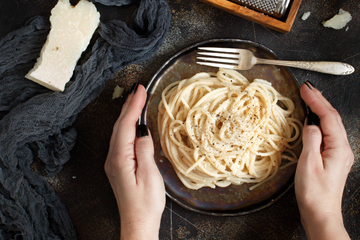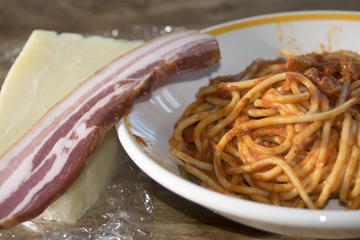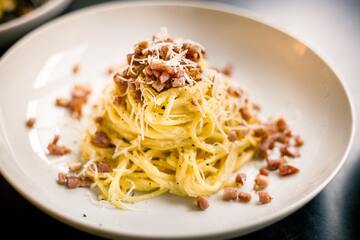How to make homemade pesto: Healthy and easy pesto pasta recipes
Jilt the jar with these beautiful homemade pesto recipes! There's a huge depth and breadth of options when it comes to the humble pesto, so let's take a look at how to make pesto sing like an angel.
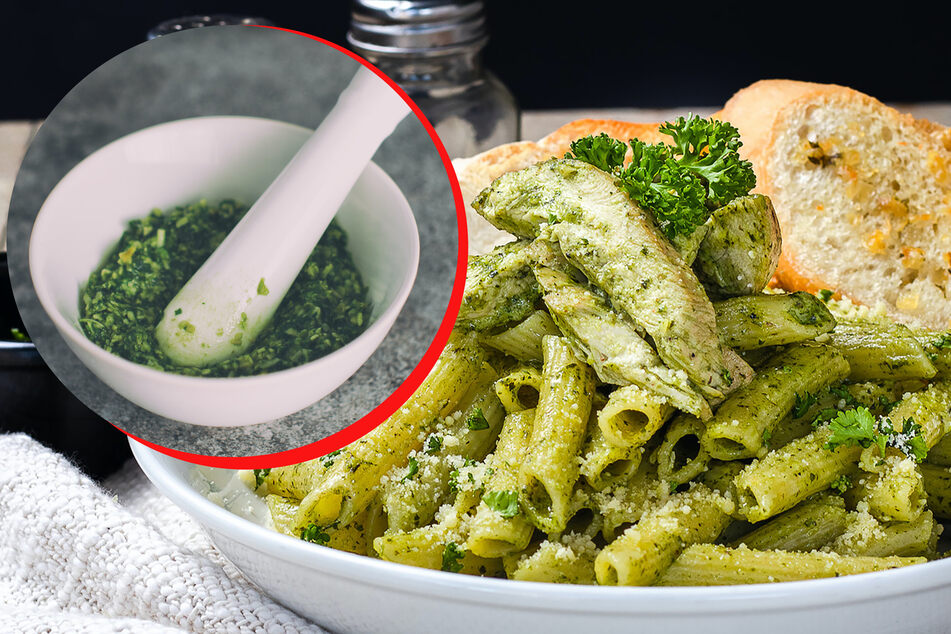
Pesto pasta is not only a perfectly alliterative noodle portion, but it's also a quick-and-easy weeknight feast for the whole family.
This 15-minute sauce is make-able in the time it takes to boil water and cook pasta, and you don't even need to buy it in the jar. After all, homemade is always better!
In this food and recipe guide, TAG24 will take you through a variety of homemade pesto recipes. How do you make the perfect pesto pasta? Let's find out.
What is pesto?
Traditionally made with basil, garlic, and various types of hard Italian cheese, pesto is a beautiful herby pasta sauce that originated in Genoa, Italy. The name pesto is derived from the Italian word pestare, which means to grind something up into a fine paste. Indeed, the most common type of pesto, "Pesto Genovese," takes its name from its place of origin.
Interestingly, the invention of pesto is thought to date all the way back to the ancient Romans, though their recipes were slightly different and basil didn't enter the picture until the 1800s. It is the perfect accompaniment to pasta, but is also commonly used with proteins like chicken and salmon.
How to make pesto: Recipe for Pesto Genovese
When making pesto, you need very few pieces of equipment. Ultimately, this quick and easy pasta sauce is one of the most customizable things you can make. Do you like bigger, chunkier sauces? Use a mortar and pestle. Do you like a finer, creamier sauce? Into the blender it goes!
Here's what you will need to make homemade pesto:
- Mortar and pestle
- Blender
- Cheese grater
- Sharp knife
- Sterilized glass jar
The equipment you need may vary depending on what kind of pesto you make, but for the most basic of homemade sauces, you won't need any more than this!
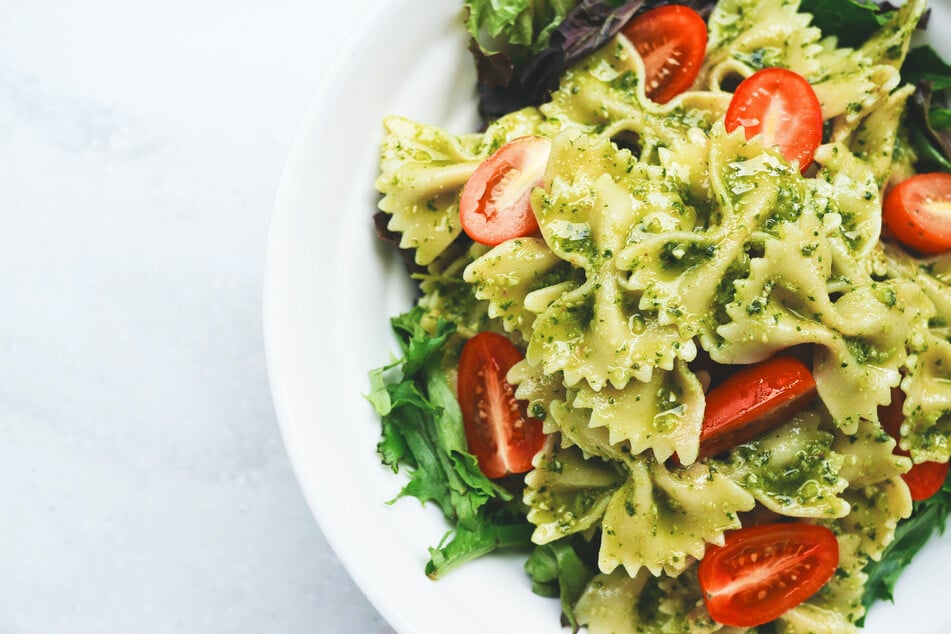
Easy pesto recipe | Ingredients
We're going for a basic Pesto Genovese in this recipe, but the basic concepts will apply to most homemade pesto. None of these require particularly expensive or complicated ingredients, so let's dive in.
Ingredients for Pesto Genovese:
- 3 big handfuls of basil, 2-3 oz
- Parmigiano reggiano (parmesan) cheese, 3/4 cup
- Garlic, 3 cloves
- Pine nuts, 2 tbsp
- Olive oil, 1/2-3/4 cup
- Pinch of salt
Concerning portions: These measurements will make you about enough pesto to fill a 5 ounce jar, which will feed 2–3 people, depending on how intense you want the flavor to be per serving. If you want to make more, adjust these quantities proportionally.
Easy pesto recipe | Instructions
It's extraordinarily easy to make pesto, as it's basically a matter of grinding everything together and storing it in a jar. The whole process can be done in less than 10 minutes. As such, let's keep it simple and straight forward.
Here's how to make Pesto Genovese:
Step 1: Wash your basil leaves to remove any dirt, and sterilize your jar (this is especially important if you plan on storing your pesto for a while).
Step 2: After washing your basil, place it into a food processor (or use a mortar and pestle) along with the garlic and the pine nuts. Grind until well-minced.
Step 3: Grate your cheese as finely as possible, using the smallest holes on your cheese grater.
Step 4: Add the cheese, the olive oil, and the salt, and then blend until your pesto is the consistency you're looking for.
Step 5: Store the pesto in the glass jar, or use it immediately on pasta, chicken, or a dish of your choosing.
How long does homemade pesto last?
Homemade pesto will generally last only about two weeks if stored in the fridge. This amount of time can be increased if you store it in a vacuum-sealed pack, don't use any cheese, or keep it in a very well-sterilized jar. If you keep the sauce for longer, though, be cautious and give it a smell before using.
Different types of pesto pasta
There are tons and tons of different kinds of pesto, as it is basically a blend of cheese, olive oil, and most importantly, herbs and nuts. We'll do a deep dive on our two favorite alternative pestos, (spinach pesto and lemon pesto, but first let's give you an idea of some other fantastic pesto types.
Here are 10 must-try alternative types of pesto:
- Pesto alla Trapanese
- Pesto Modenese
- Pesto agli Agrumi
- Pesto Rosso
- Tuscan kale pesto
- Red pepper pesto
- Avocado pesto
- Rocket pesto
- Mint pesto
- Parsley pesto
Here's the deal: The methodology of pesto is pretty simple. In the coming recipes, we will list the ingredients but not the instructions. Follow the instructions for Pesto Genovese – it's all the same.
Spinach pesto recipe
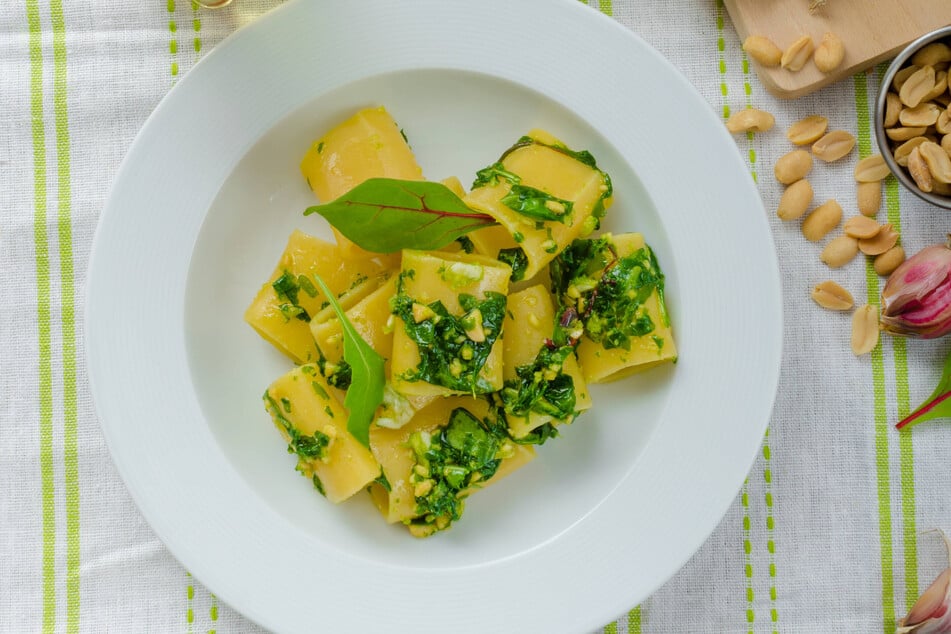
Spinach might seem more like a boring health food and less like a delicious pasta dish, but that's not true at all! Spinach pesto is tasty, simple, and easy to whip up in only a couple of minutes.
Here are the ingredients for spinach pesto:
- Spinach, 3–4 cups
- Garlic, 2 cloves
- Pine nuts, 1/2 cup
- Cashew nuts, 1/2 cup
- Parmigiano reggiano, 3/4 cup
- Olive oil, 3/4 cup
- Juice of half a squeezed lemon
- Pinch of salt and pepper
Our biggest recommendation is to pair spinach pesto with beef, in pasta with a bit of butter, or even on a beautiful pizza with some buffalo mozzarella. It's versatile, healthy-as-heck, and an absolute winner!
Lemon pesto recipe

Lemon is one of those ingredients that will forever scream "summer" and is the perfect complement to seafood (especially shellfish and shrimp). It also screams "Italy," where they grow some of the best in the world. The sour, popping flavor that comes from these little balls of sunshine isn't usually associated with pasta, but once it has been, you'll never look back!
Here are the ingredients for homemade lemon pesto:
- Grated zest of 3 large lemons
- Slivered almonds, 1/2 cup
- Spring onions (chopped), 1/2 cup
- Parmigiano reggiano, 3/4 cup
- Olive oil, 3/4 cup
- Pinch of salt and pepper
We'd recommend frying off some shrimp in a pan, deglazing it with pasta water, and then adding your pasta. Once you have fried off the pasta in the oil, add a few more spoonfuls of pasta water as well as your lemon pesto. Mix thoroughly until creamy and serve generously!
It's not just about pesto pasta | Alternative recipes!
Pesto pasta is easy to make, as all you need to do is mix your cooked pasta with the pesto, and you are done with a basic dish. Of course, there are many variations and a wide array of different ways to eat pesto. Indeed, some don't even require pasta. Here are a few of our favorites.
Pesto salmon recipe
Salmon goes wonderfully with pesto, especially if it is a lemon pesto or one that has been made particularly tangy. Keep it simple by seasoning the salmon with salt and then lightly grilling it or frying it off in some olive oil (get that skin nice and crispy!). Top the fish with your homemade pesto and serve it with a nice salad or some sides of your choice!
Pesto chicken recipe
Let's be real: you can go with the healthy option or the unhealthy option. Which one is best? Well, the healthy option is simple yet delicious: Grill a nicely seasoned chicken breast and serve it topped with your pesto, alongside a salad. Now that we've got that out of the way, here's the naughty version...
A chicken pesto burger is one of the best things you can eat in this world. That salty, tangy combination of the lean chicken with the cheese and a beautiful yogurt-pesto sauce is absolutely to die for. Serve it with some fries or a nice potato salad!
To make the ultimate chicken pesto burger, toast some burger buns and set them aside. Add about 3–4 tablespoons of Greek yogurt to a small bowl along with a pinch of salt and 1–2 tablespoons of your pesto. Mix thoroughly and spread onto the burger buns. The rest? Well, it's a burger: chicken, cheese, lettuce, tomato.
How to make pesto creamy

The trick to making your pesto pasta creamy is simple: use the pasta water! When you boil pasta in water, it releases a huge amount of starch – that's why you should never put a lid on boiling pasta. This beautiful, well-salted pasta water will season your pasta and act as a fantastic creaming agent.
When you drain your pasta, save some of the water. Allow this water to reduce in temperature a little bit so that it isn't boiling, and then mix it into the pasta as you add the pesto. Give it a brisk stir, and the starch should make your pesto turn creamy.
So, why should I make my own pesto?
With prices as high as they are at the moment, you can easily pay $4-5 per jar for a semi-decent (though not great) pesto. Considering that only a little while ago that price was about half and most pesto jars are only around 5-6 oz, there is no point in buying commercial pesto products. After all, the ingredients to make your own are astoundingly basic.
For the price of a standard jar of basic pesto, you can make yourself probably 3–4 times the quantity of far tastier and far more versatile pesto. There is tons of experimenting to have fun with and, to be honest, the only piece of equipment you will really need is a knife and a spoon!
You should absolutely make your own pesto! It's fun, cheap, easy, quick, and delicious – what's the downside?
Cover photo: Artur Rutkowski / Unsplash (Left), & Nerfee Mirandilla / Unsplash (Right), & TAG24 Edit
